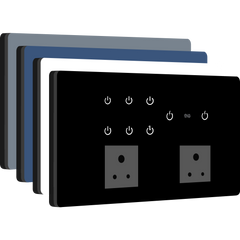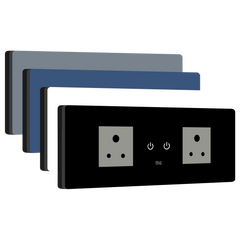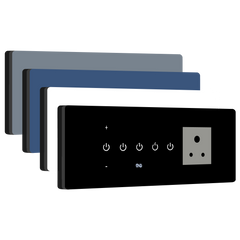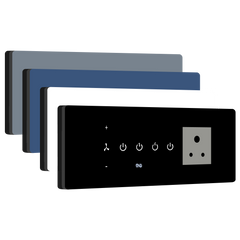Smart Homes: How the Internet of Things leads to Home Automation
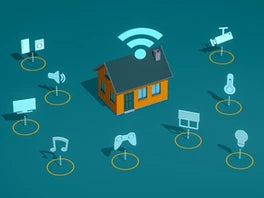
Smart Homes: How the Internet of Things leads to Home Automation with Smart Switches
Sunday afternoon, you are curled up, reading a business magazine. Outside, it is overcast skies, and the sunlight has dimmed to evening levels. A cool breeze picks up, and it starts to rain. Inside, the air conditioning turns off, the lights turn on, and a message pops up on your smartphone - “Would you like a cup of coffee on this rainy afternoon?” No, not your friend living a few doors away. It’s the coffee machine in your kitchen, controlled by Smart Switches.
Too sci-fi and futuristic? What if the future was already here? There are automatic systems that track temperature, manage security, switch on, switch off, or dim lights based on natural light availability, and even detect room occupancy. Combine these systems, have them communicate over your internet connection, and your home is ready to become smart with the help of Smart Switches.
Home automation is no longer unthinkable. Smart homes are fast becoming the present. At your fingertips, through your smartphone, you can make your home save your time and money. This is achieved through technology that allows machine-to-machine communication, which is shared over the internet. The internet connects everything. It is the Internet of Things (IoT).
What is IoT?
The Internet of Things is a digital network that connects physical devices, home appliances, vehicles, any device that is embedded with sensors, software, electronics, actuators, and which can connect to the internet. These devices, including Smart Switches, communicate with each other and operate using the internet infrastructure that is available.
With IoT, homes become automated unlike before. Your refrigerator can tell your smartphone that you are running out of vegetables. You see the message and stop at the grocery store on your way home from work. It saved you time because you didn’t come home, open the fridge, realize you had nothing to cook with, and then head back to the store. Your machines communicating over the internet, including Smart Switches, saved time and fuel money.
The combination of IoT and M2M
To achieve the full potential of IoT, Machine-to-Machine (M2M) communication is critical. Your washing machine needs to understand the message that the weather sensor sends it to effectively choose a program. On a cloudy day, it can choose a longer spin cycle to dry clothes. The security system should decipher the 9 PM alert sent by your digital clocks. Smart Switches play a crucial role in enabling seamless M2M communication within a smart home.
When creating products for home automation, companies involved in consumer IoT focus on both these aspects of the technology. Most automation technology can leverage the existing internet infrastructure in the home to provide services, including Smart Switches.
Long-term benefit
The initial setup cost can seem high, but homeowners stand to gain a lot of savings from smart homes with the integration of Smart Switches. Reduced electricity bills are a known benefit because appliances can be scheduled to run at non-peak hours. You can even give electricity back to the grid with smart metering. When watering your garden, sensors can cut off water once it reaches the optimum level needed for your plants, which saves water.
In the long run, it is a win-win situation for consumers, as companies can provide a wider range of services, and people's consumption of resources becomes more responsible. Smart Switches are a key component in achieving these long-term benefits.

